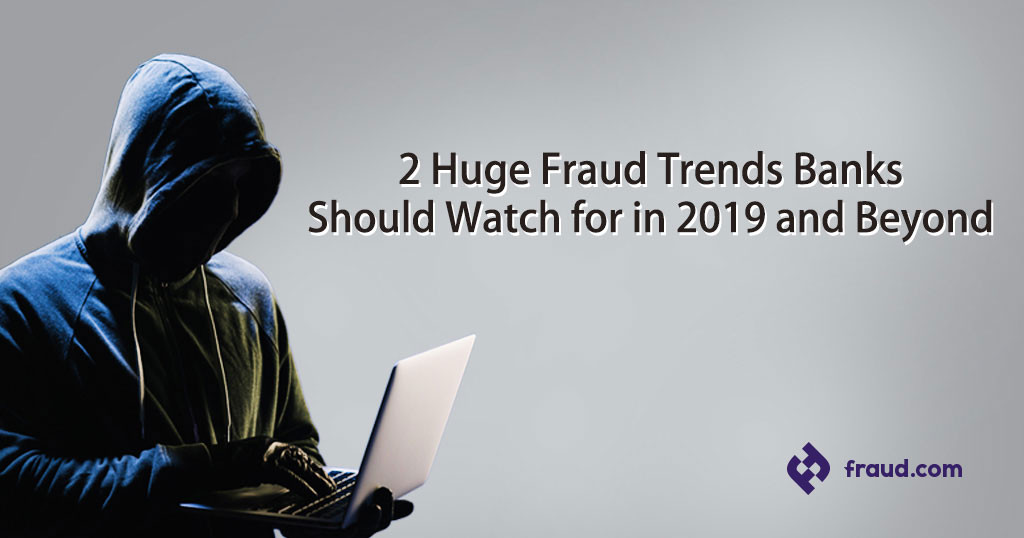Technology has changed the way people bank for the better. Banking is more convenient now than ever, to the point that most people do not even need to walk into a bank to complete any number of transactions. From depositing physical checks to sending pizza money to a friend via a third-party application, digital banking has taken over and shows no signs of slowing down. However, with this ultimate convenience comes a large amount of fraud risk which has turned into a multi-billion dollar industry for criminals.
Take for example a report by the American Bankers Association (ABA) which reported in 2016 bank’s fraud prevention measures stopped $17 billion in fraudulent transactions. This shows how big of a threat banking fraud is today and how it will continue to attract criminal activity globally due to the lucrative rewards which can be had. This is similar to why criminals engage in the illicit drug industry due to its ability to amass immense profits in a small amount of time. A recent KPMG Global Fraud Survey found there is no slowing down when it comes to fraud risk. The survey found in 2018 61% of respondents reported the total volume had increased, with 59% stating the total value of losses had also increased.
With fraud risk levels increasing year over year, this article will look into a couple fraud trends the banking industry must watch for in 2019 and beyond.
Occupational Fraud
Bank fraud and other financial crimes usually conjure up thoughts of criminals or hackers in a dark basement carrying out illicit activities in the shadows. However, many do not realize a large number of financial crimes especially bank fraud is carried out by employees themselves. Yes, you read this correctly, and the data to back it up is quite terrifying. A 2016 report by the Association of Certified Fraud Examiners (ACFE) found 23% of all occupational fraud cases caused over $1 million in losses. Furthermore, the Federal Deposit Insurance Corporation (FDIC) reported over 50% of all bank fraud and embezzlement cases closed by the Federal Bureau of Investigation (FBI) are the result of insider fraud.
This immense threat to the banking industry is largely due to employees having in-depth knowledge of internal processes, policies, and systems. These employees know the vulnerabilities and weaknesses which can be exploited for personal gain, similar strategies used by external threats such as cybercriminals to gain access to customer assets. Examples of occupational fraud include asset misappropriations, embezzlement, falsifying accounting records, diverting customer assets for personal gain, and fraudulent financial reporting. These occupational fraud activities erode confidence in financial organizations, both inside and out. Bank executives are less trustworthy of internal staff and outside stakeholders (e.g. consumers) are more cautious when choosing a bank with a troubled history of internal fraud losses. In terms of reputational damage, occupational fraud could have even more adverse impact on the organization than if attacked by an external threat. When the market can’t trust those employed to manage their financial assets, a real problem is on the industry’s hands.
Mobile Banking Fraud
Mobile banking has added another level of convenience for banking customers who now possess the power and options to manage their finances from their smartphones. Mobile banking has been showing steady increases over the last several years in terms of adoption, with an eMarketer report finding mobile banking users increased 6.6% from 2017 to 2018, this equates to 7.1 million new users. Of course, when it comes to bank fraud more users equals more opportunities for criminals to carry out their fraud schemes on innocent consumers. There is data to back this up, with LexisNexis reporting 60% of digital banking fraud now originating from mobile channels.
The most common forms of mobile banking fraud include depositing fraudulent checks, cybercriminals using stolen identity credentials to hijack bank accounts, and mobile banking Trojans. The last fraud scheme may sound like something from Odysseus but it is actually a form of malware and a very dangerous one at that. This malware’s primary mission is to steal money from mobile user’s bank accounts by tricking users into downloading the malware right onto their phones. The Trojan app disguises itself as a legitimate banking app advertised through third-party app stores, through SMS messages containing malicious URLs, and even through legitimate app stores such as Google Play. Once the app is downloaded it uses text hiding, small cash movements, or app mirroring to steal money from bank customers. Mobile Trojans are a major risk to banks with mobile app offerings and one to keep an eye out in the years to come.
Fraud has been around since the dawn of time and will continue to be a source of income for criminals around the world. The banking industry faces a daily struggle with current and emerging fraud trends. The rapid development of digital banking channels has only made the fight harder against fraud, however, for banks, the benefits to customers outweigh the fraud risks associated with mobile banking. This means banks who are using mobile banking channels must be diligent in identifying, assessing, and preventing fraud across all channels. The future of banking looks bright, but there will always be individuals looking for vulnerabilities to exploit for illicit gain. Now is the time for banks to meet the fraud challenges of today and tomorrow.









